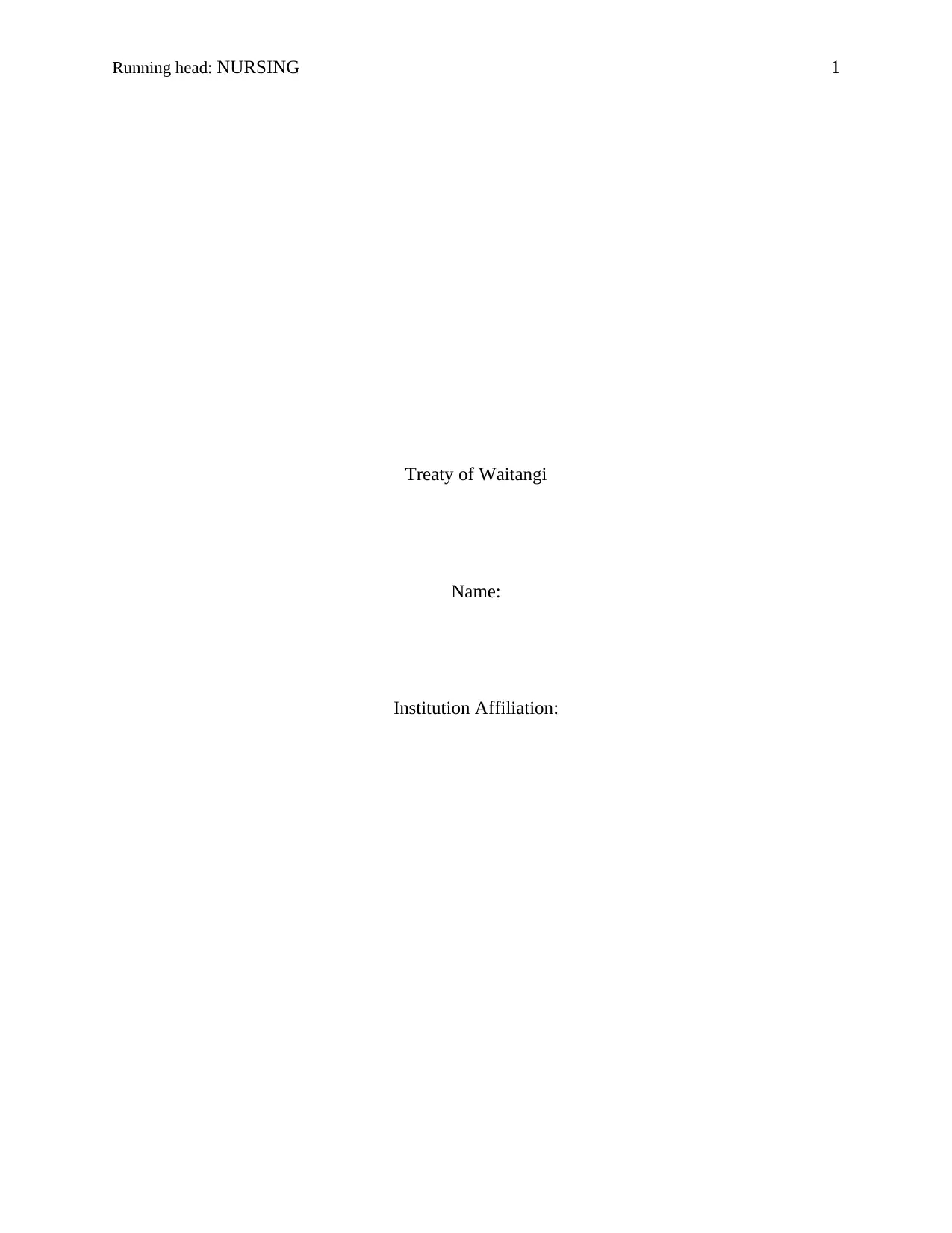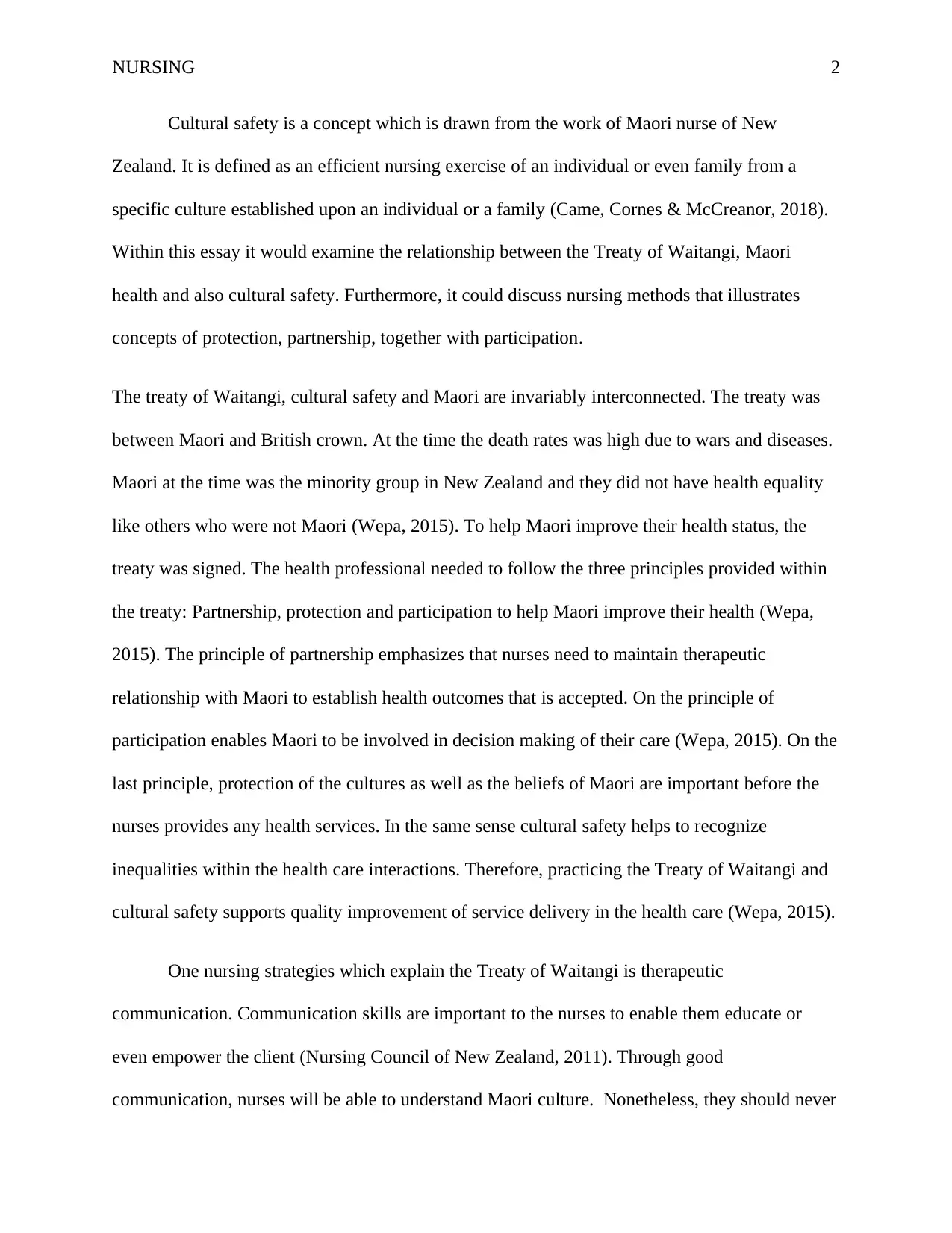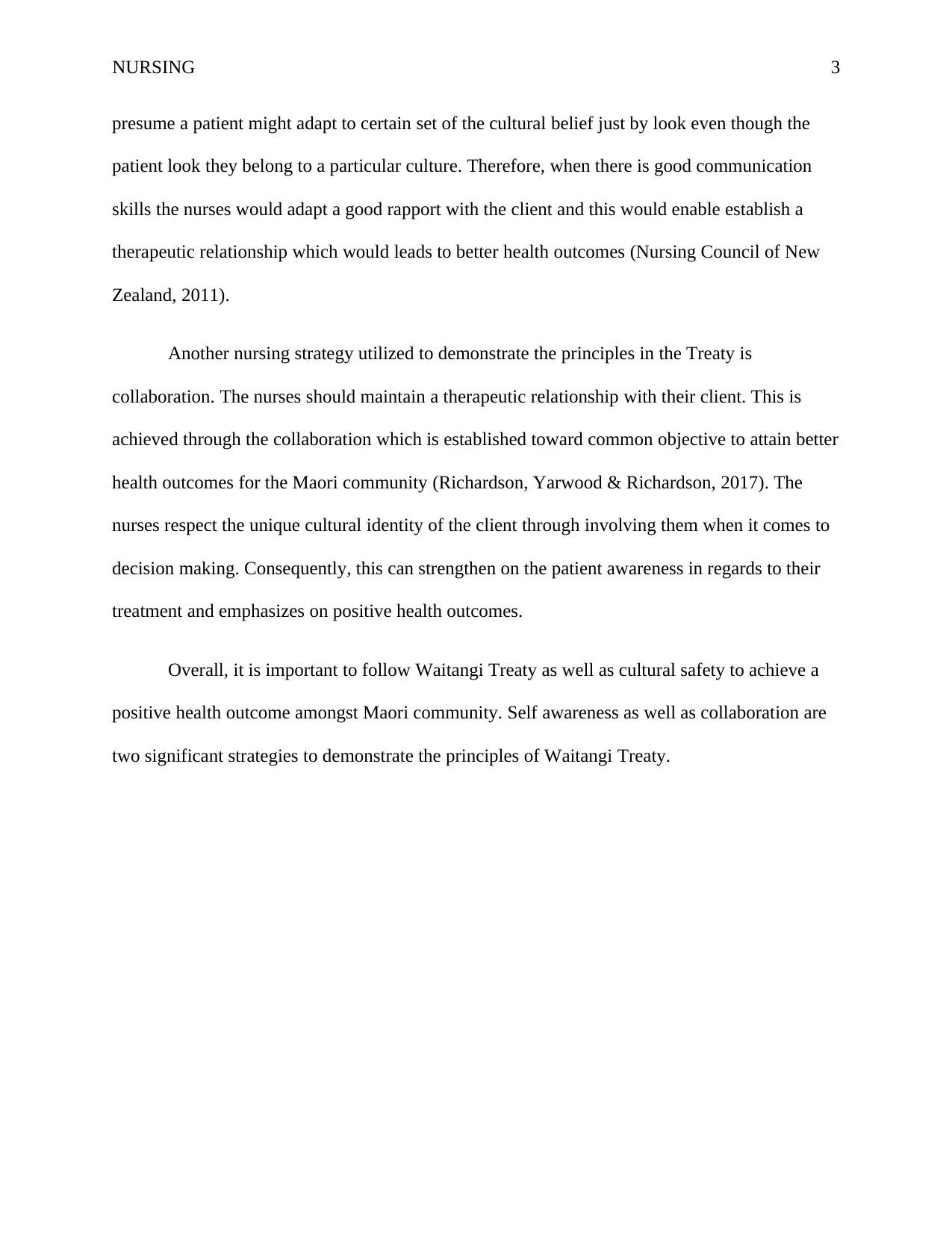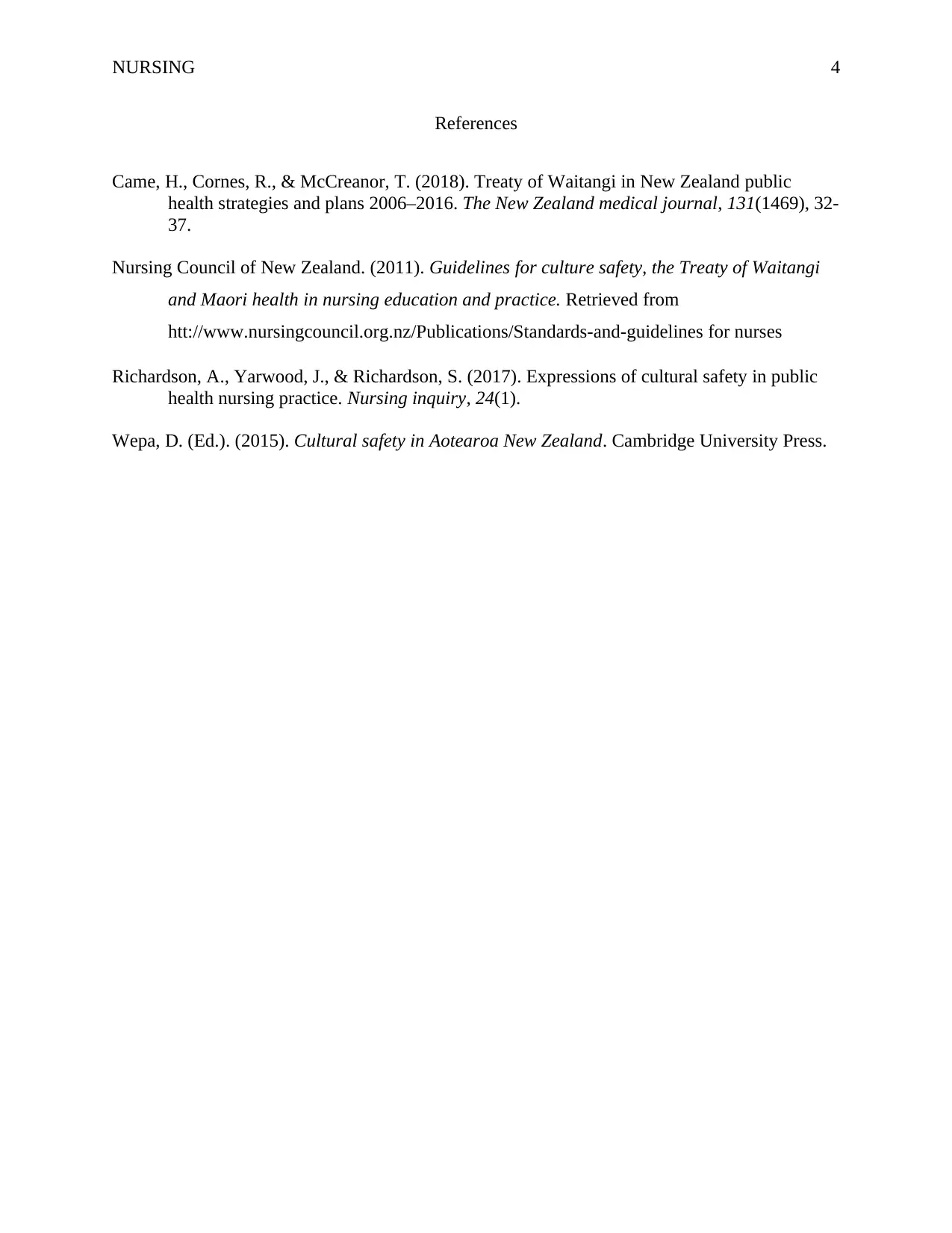Essay on Treaty of Waitangi, Maori Health, Cultural Safety in Nursing
VerifiedAdded on 2021/04/21
|4
|732
|103
Essay
AI Summary
This essay delves into the crucial relationship between the Treaty of Waitangi, Maori health, and cultural safety within the context of nursing practice in New Zealand. It begins by defining cultural safety and its origins, emphasizing its significance in providing effective care for Maori individuals and families. The essay explores the historical context of the Treaty of Waitangi and its implications for Maori health outcomes, highlighting the principles of partnership, protection, and participation as essential guidelines for healthcare professionals. Furthermore, it discusses nursing strategies such as therapeutic communication and collaboration that exemplify these principles, aiming to foster improved health outcomes for the Maori community. The essay underscores the importance of cultural sensitivity and self-awareness in nursing practice, advocating for a healthcare environment that respects and acknowledges the unique cultural identities and needs of Maori patients. References to relevant literature support the arguments, underscoring the importance of the Treaty of Waitangi and cultural safety in achieving positive health outcomes for Maori individuals and the community as a whole.
1 out of 4










![[object Object]](/_next/static/media/star-bottom.7253800d.svg)